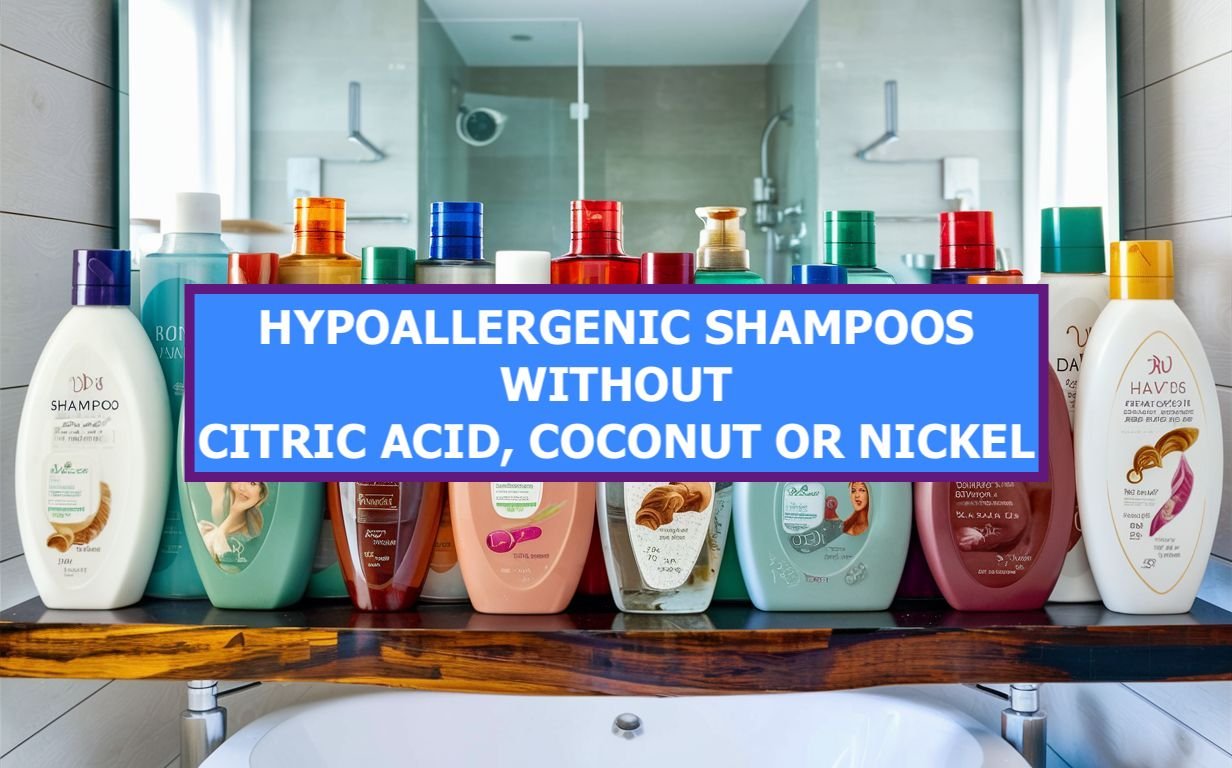In a world where we are constantly in contact with various chemicals through everyday products, understanding how these substances interact with our bodies is crucial for maintaining our health and well-being. One such chemical that needs more understanding and has come under scrutiny for its allergenic potential is Hema, short for 2-hydroxyethyl methacrylate. Since humans can develop an allergy to anything on earth, Hema allergy results from its presence (or over-presence) in several everyday products. As the use of products containing Hema has become more widespread, so has the awareness of allergic reactions associated with this chemical.
This article will raise awareness of hema allergy, what it is, why and where it’s used, and the importance of recognizing and managing allergic reactions to it, especially for individuals frequently exposed to products containing hema.
What is Hema?

2-Hydroxyethyl methacrylate, or Hema, is a synthetic resin in the methacrylate family. This compound is widely recognized for its excellent adhesive qualities, making it a popular ingredient in producing and manufacturing various products requiring durability and long-lasting properties.
2-HEMA is also commonly utilized to enhance the hydrophobic characteristics or bonding capabilities on the surface of polymers and polymer-based substances, including specialty coatings, resins, adhesives, printing inks, and acrylic plastics.
When combined with other acrylic ester monomers as a co-monomer, 2-HEMA aids in managing hydrophobic properties or adding reactive functionalities. In biomedicine, it serves as a foundational monomer for numerous hydrogel products, such as soft contact lenses, polymer carriers for regulated drug delivery, absorbents for bodily fluids, and coatings that reduce friction. Specifically, in some types of contact lenses, the 2-HEMA polymer stands out for its dual properties: it remains rigid and moldable through grinding when dry yet turns flexible upon water absorption.
This versatility and effectiveness have made hema a popular ingredient in several industries, from medical and dental care to beauty and personal care products.
Hema’s popularity is due to its properties, one of which is its ability to form long-molecule polymers, repeating chains of molecules that create a strong, cohesive material (entirely different from polymer clay, by the way).
In dentistry, for example, hema improves the adhesion between composite filling materials and the natural tooth, ensuring that fillings stay in place for a long time. In the beauty industry, Hema creates long-lasting cosmetic enhancements, such as gel nail polishes that resist chipping and maintain their shine.
Related Articles:
Despite its widespread use and benefits, Hema, unfortunately, has been identified as a potential allergen, with some individuals developing allergic reactions upon exposure to any products containing it. This has prompted a closer examination of the products that contain Hema and how it affect sensitive individuals.
Identifying Hema Allergy
As discussed in previous articles, Allergies are triggered when the immune system identifies a foreign compound in the body; the same takes place with Hema Allergy, a compound found in many everyday products, is seen as a harmful invader, leading to an allergic reaction. This allergic response is the body’s way of protecting itself; in the case of Hema allergy, it results in a series of symptoms ranging from mild general discomfort to severe reactions, depending on the individual’s level of sensitivity and the extent of exposure.
Understanding and carrying out proper assessments to identify hema allergy is essential for those who suspect they might be allergic and for anyone regularly using products containing hema.

Hema Allergy Symptoms
The symptoms associated with Hema allergy can manifest in various ways, primarily affecting the skin but also potentially impacting respiratory health. Common symptoms include:
- Dermatitis: This is the most common symptom, characterized by red, itchy, flaky, or swollen skin at the site of contact. Dermatitis can occur on the hands of those who use nail products containing Hema or around the mouth for dental products.
- Urticaria (Hives): These are raised, itchy welts on the skin that can appear suddenly after exposure to Hema-containing products. Hives may vary in size and can appear anywhere on the body.
- Respiratory Symptoms: Inhaling airborne particles from products containing Hema percentage can lead to respiratory issues such as shortness of breath, coughing, wheezing, or a runny nose, particularly in individuals with pre-existing respiratory conditions.
- Eye Irritation: Contact with Hema can cause red, itchy, or watery eyes, floaters, or blurry vision, especially if the substance is used in cosmetics or applied near the eye area.
- Anaphylaxis: Although extremely rare, severe exposure to Hema can potentially trigger anaphylaxis, a life-threatening allergic reaction that requires immediate medical attention. Symptoms include difficulty breathing, a sudden drop in blood pressure, dizziness, and loss of consciousness.
Triggers of Hema Allergy
Hema allergy is triggered by direct contact with or inhalation of Hema present in various products. Key sources include:
- Dental Products: Composite fillings, dental adhesives, and sealants.
- Cosmetic Products: Gel nail polishes, hardeners, and artificial nails.
- Medical Devices: Certain adhesives used in wound care or medical tapes.
Occupational exposure is also a significant trigger, especially for dental professionals and beauticians who frequently work with Hema-containing materials.
What Are The Products Containing Hema
Hema can be found in a wide array of products that many people use on a daily basis. Knowing where Hema is commonly found or hidden can help individuals with sensitivities avoid exposure and manage their allergies effectively. Here are 20 daily-used products that may contain Hema:
- Dental bonding agents: Used in fillings and dental repairs.
- Dental composite resins: Employed for aesthetic dental restorations.
- Dental sealants: Applied to prevent cavities.
- Orthodontic adhesives: Used for attaching braces to teeth.
- Soft contact lenses: Hema contributes to the moisture retention properties.
- Gel nail polish: Known for its durability and shine.
- Nail hardeners: Used to strengthen nails.
- Artificial nails: Such as acrylics and gel extensions.
- Nail primers: Applied before gel or acrylic application.
- Nail art accessories: Some adhesives and decorative elements.
- Eyeglass lens coating: For scratch resistance and anti-fog properties.
- Adhesives for wound care: Found in certain medical tapes and bandages.
- Skin adhesives: Used in cosmetic and medical procedures.
- Hearing aid domes: To provide a comfortable fit.
- Cosmetic primers: These are used as a base for makeup application.
- Hair styling gels: Offering hold and flexibility.
- Sunscreen lotions: Certain formulas for water resistance.
- Moisturizers: Some brands for improved hydration.
- Printing inks: For glossy finishes.
- Coatings for pills and capsules: To ensure a smoother swallowing.
For individuals with Hema allergy, avoiding products that contain this compound is crucial to preventing allergic reactions. It’s essential to scrutinize product labels carefully and consult with healthcare professionals or manufacturers if there’s uncertainty about a product’s ingredients. As awareness of Hema allergy grows, more companies are developing and labeling Hema-free alternatives, providing safer options for those affected.
Allergies That Are Most Likely Caused by Hema Allergy or Hema Sensitivity
It’s important to note that when allergies are specifically caused by the presence of HEMA (2-Hydroxyethyl methacrylate) in products, people might refer to their reactions more by the symptoms or the specific product types, rather than by distinct allergy “types.” Here are the common terms or phrases people might use to describe their allergies without realizing it’s actually related to HEMA ALLERGY:
- Contact Dermatitis: This term is often used when people experience skin reactions after direct contact with products containing HEMA, such as adhesives, nail products, or dental materials. Symptoms include redness, itching, and blisters.
- Nail Damage or Nail Allergy: Particularly with nail products (like gels and acrylics that contain HEMA), individuals might describe their condition as having an allergy to nail polish, allergy to artificial nails, or nail allergy, mentioning symptoms like brittle nails, swelling around the nails, and itching.
- Acrylic Monomer Allergy: Since HEMA is a type of acrylic monomer, those with sensitivities might refer to their reactions as having an allergy to acrylics, especially in the context of dental and orthopedic materials, as well as nail enhancements.
- Resin Allergy: For products that use HEMA in resins, such as in certain medical devices, dental fillings, or coatings, individuals might describe their reactions as resin allergies. Symptoms can include contact dermatitis and mucosal irritation.
- Cosmetic Allergy: When HEMA is present in cosmetics, such as certain types of makeup or hair gel, individuals might broadly refer to their reactions as cosmetic allergies, with symptoms typically involving skin irritation or rashes.
Identifying a Reaction to Hema
Recognizing an allergic reaction to Hema involves observing the onset and pattern of symptoms and tracing the exposure to its potential source.
Keeping a diary of when exposures and reactions take place can help identify patterns and triggers. Once you have been able to establish a pattern or source, consulting with a healthcare professional, preferably an allergist, is a critical next step. They can provide a definitive diagnosis through patch testing and offer effective guidance on managing the allergy.
Risk Factors for Developing Hema Allergy
While anyone can develop an allergy to Hema, certain factors can increase the likelihood of sensitization and allergic reactions:
- Occupational Exposure: Professionals who frequently work with Hema-containing products are at a higher risk. This includes dental professionals, nail salon workers, and beauticians who are in regular contact with these compounds.
- Frequent Use of Gel Nail Products: Individuals who regularly apply gel nail polish or artificial nails at home or in salons may be more susceptible to developing a Hema allergy due to prolonged skin exposure.
- Previous Allergies to Acrylates: Those with existing allergies to acrylates, a group of chemicals related to Hema, may also be more prone to react to Hema due to chemical similarities.
- Genetic Predisposition: As with other allergies, there may be a genetic component that makes certain individuals more likely to develop an allergy to Hema.
Mitigating Risk and Managing Exposure
For individuals at risk of Hema allergy or those already sensitized, minimizing exposure is critical:
- Personal Protective Equipment: Gloves and masks can help reduce skin and respiratory exposure to hema in professional settings.
- Choosing Hema-Free Products: Opting for Hema-free dental materials, nail care products, and cosmetics can significantly lower the risk of allergic reactions. Always read product labels and inquire about the ingredients of professional products used in dental offices or beauty salons.
- Regular Monitoring for Symptoms: Being vigilant about any symptoms following exposure to potential Hema sources is important for early identification and management of allergies.
Understanding the sources and risk factors associated with Hema exposure is essential for individuals who may be susceptible to developing allergies.
Diagnosis: How to Test For Hema Allergy
Diagnosing a hema allergy is an essential step for individuals experiencing symptoms indicative of an allergic reaction to 2-hydroxyethyl methacrylate (Hema) and ruling out other allergens. Since hema is a specific chemical compound found in a variety of products, diagnosing an allergy to it involves detailed testing and evaluation by healthcare professionals. We recommend allergists or dermatologists.
Diagnostic Process: How to Test For Hema Allergy
- Medical History and Symptom Evaluation: The diagnostic process begins with a comprehensive review of the patient’s medical history, including any known allergies, and a detailed discussion of symptoms. Patients are encouraged to document their symptoms, noting when they occur and any potential triggers related to product use or occupational exposure.
- Patch Testing: The gold standard for diagnosing Hema allergy is patch testing, a procedure where small amounts of Hema and other potential allergens are applied to the skin under occlusive patches. These patches are typically worn for 48 hours, after which they are removed by a healthcare professional to assess the skin’s reaction. A positive reaction, characterized by redness, swelling, or blistering at the site of the Hema application, indicates an allergy.
- Interpreting Results: Positive patch test results for Hema confirm an allergy and help guide management and avoidance strategies. It’s important to note that patch testing can also reveal sensitivities to other related chemicals, aiding in a comprehensive understanding of a patient’s allergen profile.
Managing and Treating Hema Allergy
Once a Hema allergy has been diagnosed, the focus shifts to managing the condition and treating symptoms. Effective management hinges on a combination of avoidance strategies and medical treatments to alleviate symptoms.
Avoidance Strategies
- Product Substitution: Seek out Hema-free alternatives for personal and professional use. Many companies now offer Hema-free dental materials, nail care products, and cosmetics. Reading labels and inquiring about the ingredients of products can help minimize exposure.
- Protective Measures: For professionals who cannot avoid exposure due to their work, employing protective measures such as wearing nitrile gloves protective clothing, and ensuring adequate ventilation in the workspace can reduce the risk of skin contact and inhalation.
- Education and Awareness: Staying informed about products commonly containing Hema and advocating for Hema-free options in professional settings are crucial for long-term management.
Treatment Options
- Topical Treatments: Topical corticosteroids can reduce inflammation and itching for skin reactions. Emollients or moisturizers can help repair the skin barrier and alleviate dryness.
- Antihistamines: Oral antihistamines may be recommended to relieve itching and other allergic symptoms.
- Medical Intervention: In cases of severe allergic reactions, seeking immediate medical care is necessary. For chronic or severe allergies, allergists may discuss additional treatments or interventions tailored to the individual’s needs.
Managing a Hema allergy effectively requires a proactive approach, focusing on minimizing exposure and treating symptoms to maintain quality of life. Collaboration with healthcare providers, employers, and product manufacturers plays a key role in achieving these goals, ensuring that individuals with Hema allergy can navigate their condition with confidence and support.
Alternatives to Hema-Containing Products
Finding alternatives to Hema-containing products is essential for individuals diagnosed with a Hema allergy, as it allows them to avoid triggers and manage their condition effectively. With the growing awareness of Hema allergies, many companies have begun to offer Hema-free alternatives across various product categories. Here’s a deeper look into navigating the search for safer options:
Personal Care and Beauty Products
- Nail Care: Opt for Hema-free nail polishes, hardeners, and gels. Several brands have developed lines specifically formulated without Hema to cater to sensitive individuals. Before purchasing, check the product labels or inquire directly with the manufacturer.
- Cosmetics: While less common in makeup, vigilance is needed. Look for hypoallergenic or sensitive skin-friendly labels, and review ingredient lists for Hema or related acrylates.
- Skin Care: Choose moisturizers, sunscreens, and other skincare products designed for sensitive skin, which are less likely to contain Hema and other irritants.
Dental Products
- Dental Care: Speak with your dentist about Hema-free options for fillings, sealants, and other dental procedures. More dental professionals are becoming aware of material sensitivities and can provide alternatives that ensure both safety and effectiveness.
Identifying Hema-Free Products
- Ingredient Lists: Always review the ingredient lists on product labels. Hema may be listed as 2-hydroxyethyl methacrylate.
- Manufacturer Inquiries: If the ingredient list needs to be clarified or you’re unsure, feel free to contact the product manufacturer for confirmation.
- Specialty Retailers: Some stores and online retailers specialize in hypoallergenic or allergy-friendly products, offering a curated selection of Hema-free options (We will update this article with a few lists soon).
Conclusion: Navigating Life with Hema Allergy
Living with a Hema allergy undeniably requires management and living adjustments, from checking deeper into product labels to altering work practices where necessary. However, the increasing availability of Hema-free alternatives and growing public awareness have made it easier for individuals to manage their allergies effectively. Through careful product selection and a few lifestyle adjustments, those affected can avoid Hema exposure and reduce the risk of allergic reactions.
The key to successfully navigating a Hema allergy lies in empowerment through knowledge, proactive management, and open communication with healthcare providers and manufacturers.
As research into hema and other potential allergens continues to evolve, so too will the resources and options available to those affected. By taking charge of their living and working styles and only seeking Hema-free products, individuals with hema allergies can still lead healthy, fulfilling lives without being limited by their allergic condition.
FAQs: Hema Allergy
Q: Can wearing gloves prevent Hema contact during gel nail application?
A: Yes, wearing nitrile gloves can provide a barrier against Hema during gel nail application, especially for professionals in salon settings. However, ensure the gloves are free from punctures and are changed regularly to maintain protection.
Q: Are there any specific brands known for their Hema-free products?
A: While several brands offer Hema-free products, it’s essential to conduct current research, as product formulations can change. Look for brands that specifically advertise as Hema-free or cater to sensitive and allergy-prone individuals.
Q: What should I do if I suspect a Hema allergy?
A: If you suspect a Hema allergy, consult an allergist or dermatologist for testing and diagnosis. They can provide personalized advice and treatment options based on your specific sensitivity.
Q: How do I talk to my dentist about my Hema allergy?
A: Open communication is key. Before your dental appointment, inform your dentist about your Hema allergy and discuss the materials they plan to use. Request Hema-free alternatives for procedures and ask about the potential for cross-contamination with Hema-containing products. Most dental professionals are well-equipped to accommodate patients with specific material sensitivities and can take the necessary precautions to ensure your safety.
Q: What about salon visits for nail care? How can I stay safe?
A: Before your salon visit, call ahead and inquire whether they offer Hema-free nail services. Explain your allergy and its seriousness to ensure they understand the importance of using Hema-free products. Consider bringing your own verified Hema-free nail polish or gel for the technician to use. Additionally, schedule your appointment during less busy times to minimize exposure to airborne particles from other clients’ treatments.
Q: Are there any medical alerts or identifications I should consider wearing because of my hemo allergy?
A: Wearing medical alert identification, such as a bracelet or a necklace, can be a prudent measure, especially if you’ve experienced severe reactions. This ensures that responders are immediately aware of your allergy in case of an emergency, which is particularly crucial if you are at risk of anaphylaxis.
Q: How can I advocate for safer product formulations in the beauty and dental industries?
A: Consumer advocacy plays a crucial role in driving change. You can:
- Support brands prioritizing hypoallergenic and Hema-free formulations, as market demand can influence industry practices.
- Participate in community awareness campaigns or online forums to share information about Hema allergy and safe product alternatives.
- Contact manufacturers directly to express your concerns and request transparent ingredient labeling and the development of Hema-free options.
Q: Is it possible for my Hema allergy to improve over time?
A: Allergies can sometimes change, either worsening or improving, depending on various factors, including ongoing exposure and individual health changes. While a Hema allergy is not guaranteed to improve, avoiding exposure and following your healthcare provider’s advice can help manage the condition effectively. Regular follow-ups with an allergist can monitor changes in your allergy status and adjust your management plan as needed.
References:
https://www.mdpi.com/2079-6412/8/11/376
https://pubmed.ncbi.nlm.nih.gov/11396879/
https://www.polysciences.com/media/pdf/literature-resource/HEMA-Tech.pdf
https://en.wikipedia.org/wiki/Poly(methyl_methacrylate)
https://www.mpausa.org/about-methacrylates/
https://www.ncbi.nlm.nih.gov/pmc/articles/PMC5514594/
Methacrylates



